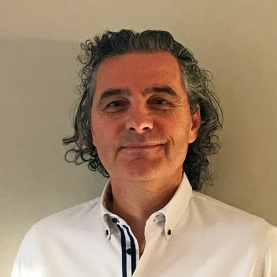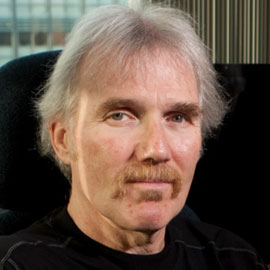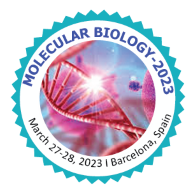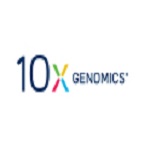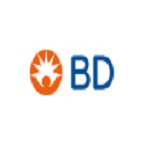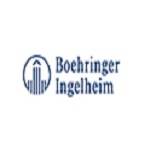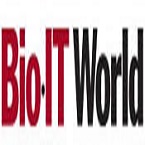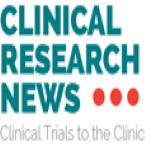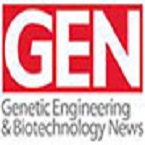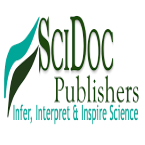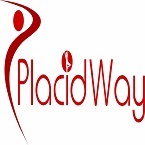About Conference
The 17th International Conference on Structural and Molecular Biology which will be held on March 27-28, 2023 Barcelona, Spain.
MOLECULAR BIOLOGY-2023 (ICSMB-2023) contributes opportunities to Scientists, research scholars, students, delegates, and exhibitors to enhance their skills and improve quality of research. We welcome you to go along with us at the Molecular Biology -2023, (ICSMB-2023) where you will make certain to have an important involvement with both your colleagues and experts from around the globe. It helps you to implement practical, proven strategies to run your research more effectively, efficiently, and profitably.
The conference is going to be organized on the (ICSMB-2023) theme: Fostering Recent Inventions and Researches In Structural and Molecular Biology. (ICSMB-2023) This Molecular Biology -2023 goes to be the most important and most promising international conference that specifically focuses on the Biochemistry by bringing all renowned researchers under one roof. This is often a 2-day multidisciplinary meeting covering all aspects of novel research and contributions within the field of structural biology and Molecular Biology (ICSMB-2023).
• Commendable talks by the first-string of the worldwide scientific community.
• Sterling workshop sessions.
• Global Recognition to meritorious Researchers.
• Global Networking with 50+ Countries.
• Novel Techniques to profit Your Research.
• Global Business (ICSMB-2023) and Networking Opportunities.
• Exquisite platform for exhibiting your by-products and International Sponsorship
Young Scientist Benefits
Our conferences (ICSMB-2023) provide best Platform for your research through oral presentations.
Share the ideas with both eminent researchers and mentors.
Young Scientist will get International Certificate.
Platform for collaboration among young researchers for better development
Target Audience
Biotechnologist
Research Scientist
Clinical Scientist (ICSMB-2023)
Research Associates
Chemist Microbiologist
Biomedical Scientist
Laboratory Technician
Lecturer in an Educational institution
Medical Institutes
Research Institutes
Why to attend?
Structural Biology and molecular biology (ICSMB-2023) conference focus on creating an international platform for the participants to share their knowledge and research work on the respective fields. It will include various tracks and sub-tracks within the Structural and molecular biology field (ICSMB-2023), which will further allow the participants to choose their respective tracks of their interests. The conference will give an opportunity to explore the topic with highly qualified researchers, scientists, doctors, professors and related people and associations who are involved in this field. It will be a great opportunity for the young researchers (ICSMB-2023) as well to learn and explore about their respective fields in Structural and Molecular Biology (ICSMB-2023).
Session/Tracks
Track 1: DNA & RNA
DNA and RNA (ICSMB-2023) are nucleic acids set up in the nexus of the cells in every living organism. Both nucleic acids share in the coding, decoding, regulation and expression of genes. DNAs parade a unique molecular (ICSMB-2023) doping structure, unseen in conventional mongrel assemblies, when unravel into light emitting organic accoutrements. Then authors unveil answer medium of DNAs into organic semiconducting (ICSMB-2023) chargers and knitter their photoluminescence and optic waveguide marvels.
Track 2: Proteomics
Proteomics aims to identify the subcellular position (ICSMB-2023) of each protein. This information can be used to produce a 3 D protein chart of the cell, furnishing new information about protein regulation. Proteomics (ICSMB-2023) refers to the study of proteomes, but is also used to describe the ways used to determine the entire set of proteins of an organism or system, similar as protein (ICSMB-2023) sanctification and mass spectrometry.
Track 3: Genomics
Genomics (ICSMB-2023) is distinct from genetics. While genetics is the study of heredity, genomics is defined as the study of genes and their functions, and affiliated ways. The main difference between genomics and genetics is that genetics scrutinizes the functioning and composition of the single gene (ICSMB-2023) whereas genomics addresses all genes and their inter connections in order to identify their concerted influence on the growth and development of the organism. Genomics (ICSMB-2023) is a forum for describing the development of genome scale technologies and their operation to all areas of natural disquisition.
Track 4: Signaling Biology
Most cells in a plant or animal are specialized to carry out one or more specific functions (ICSMB-2023). Many biological processes require various cells to work together and to coordinate their activities. To make this possible, cells have to communicate with each other, which is accomplished by a process called cell signaling. Cell signaling (ICSMB-2023) makes it possible for cells to respond in an appropriate manner to a specific environmental stimulus .Cell signaling affects virtually every aspect of cell structure and function
Track 5: Structural Biology in Cancer Therapeutics
Cancer is complicated and cancer experimenters (ICSMB-2023) borrow and acclimatize a wide variety of new tools and approaches to make progress and unite with individualities from a wide variety of other fields and disciplines to bring new approaches into cancer exploration. SBMAB provides support for the development of foundational knowledge, coffers, technologies and styles that accelerate and enable cancer exploration. Structural biology for cancer exploration focuses on understanding the structure and morphology of biomolecules (ICSMB-2023) that play a part in tumor genesis. The Division of Structural Biology (ICSMB-2023) aims to describe the structural and biochemical parcels of proteins (ICSMB-2023) and the complexes they form, in order to understand the significance of these proteins in the development and treatment of cancer.
Track 6: Blotting Techniques
Blotting is the fashion in which nucleic acids or proteins are paralyzed onto a solid support generally nylon or nitrocellulose membranes. Blotting of nucleic (ICSMB-2023) acid is the central fashion for hybridization studies. Nucleic acid labeling and hybridization on membranes have formed the base for a range of experimental ways involving understanding of gene expression, association etc. Blotting (ICSMB-2023) ways are among the most common approaches used in a molecular biology (ICSMB-2023) laboratory. These ways, Southern, northern, and immune blotting, are applicable to a variety of macromolecules including DNA, RNA, and protein, independently. Each of the ways are dependent on the capability to resolve the individual macromolecules in a size dependent manner, transfer the motes to a solid support, and eventually use a defined inquiry to descry the specific patch of interest
Track 7: DNA Fingerprinting
DNA characteristic (ICSMB-2023) is a laboratory fashion used to determine the probable identity of a person grounded on the nucleotide sequences of certain regions of mortal DNA (ICSMB-2023) that are unique to individualities. DNA characteristic is used in a variety of situations, similar as felonious examinations, other forensic purposes and maternity testing. In these situations, one aims to “match” two DNA fingerprints (ICSMB-2023) with one another, similar as a DNA sample from a given person and one from an unknown person. DNA characteristic, also called DNA typing, DNA profiling, inheritable characteristic, genotyping, or identity testing, in genetics, system of segregating and relating variable rudiments within the base brace sequence of DNA.
Track 8: PCR
Polymerase chain response (PCR) is a common molecular biology fashion that enables experimenters to make multiple clones of a specific region of DNA. (ICSMB-2023) PCR is effective, rapid fire and can amplify DNA or RNA sequences from colorful sources. Once the DNA has been sufficiently amplified, the performing product can be sequenced, anatomized by gel electrophoresis, or reproduced into a plasmid (ICSMB-2023) for experimental purposes. Polymerase chain response (abbreviated PCR) is a laboratory fashion for fleetly producing (amplifying) millions to billions of clones of a specific member of DNA, which can also be studied in lesser detail. PCR involves using short synthetic DNA (ICSMB-2023) fractions called manuals to elect a member of the genome to be amplified, and also multiple rounds of DNA conflation to amplify that member.
Track 9: Vectors
A vector (ICSMB-2023) as related to molecular biology, is a DNA patch (frequently plasmid or contagion) that's used as a vehicle to carry a particular DNA (ICSMB-2023) member into a host cell as part of a cloning (ICSMB-2023) or recombinant DNA technique. A vector is a substance, generally a piece of DNA that carries a sequence of DNA or other inheritable material and introduces it into a new cell. Vectors act as vehicles to transfer inheritable material from one cell to the other for different purposes like multiplying, expressing, or insulation. Vectors are used as a tool in molecular cloning procedures so as to introduce the asked DNA (ICSMB-2023) insert into a host cell. The DNA insert that's transmitted by a vector is nominated recombinant DNA, and the process is also known as recombinant DNA technology.
Track 10: Bioinformatics
Bioinformatics is defined as the operation of tools of calculation and analysis to the prisoner and interpretation of natural data. It's an interdisciplinary field, which harnesses computer wisdom, mathematics, drugs, and biology. Bioinformatics (ICSMB-2023), as related to genetics and genomics, is a scientific sub discipline that involves using computer technology to collect, store, dissect and circulate natural data and information, similar as DNA and amino acid sequences or reflections about those sequences. Scientists and clinicians use databases that organize and indicator similar natural information to increase our understanding of health and complaint and, in certain cases, as part of medical care.
Track 11: Gene Banks
Gene banks are a type of bio repository that preserves inheritable material. For shops, this is done by in vitro storehouse, indurating slices from the factory, or grazing the seeds (e.g. in a seed bank). For creatures, this is done by the freezing of sperm and eggs in zoological (ICSMB-2023) freezers (ICSMB-2023) until farther need. Gene banks play an important part in the long- term conservation of factory inheritable coffers and are reciprocal to the conservation of diversity in growers ’ fields and in nature. In this environment, attestation plays a critical role. The main intention of gene banks (ICSMB-2023) is to conserve collections of factory inheritable coffers for offspring. This means that the attestation of the material must also be assured across generations.
Track 12: Cell Signaling
Cell signaling (ICSMB-2023) is the abecedarian process by which specific information is transferred from the cell face to the cytosol and eventually to the nexus, leading to changes in gene expression. Cell signaling underlies critical cellular opinions similar as development, cell growth and division, isolation, migration, apoptosis, and it basically provides the collaboration needed for the functionality of multicellular organisms. (ICSMB-2023) Cell signalling is the medium by which stimulants are transmitted via a signalling waterfall to effector motes that orchestrate the applicable response. Types of cell signalling pathways include checkpoint signaling (ICSMB-2023). lipid signalling, growth signalling, nutrient signalling, insulin signalling, stress signalling, morphogen signalling, Hippo signalling (ICSMB-2023), Escarpment signalling and integrin signalling.
Track 13: Genomes to Proteins
Utmost genes contain the information demanded to make functional motes called proteins. The trip from gene to protein (ICSMB-2023) is complex and tightly controlled within each cell. It consists of two major way recap and restatement. Together, recap and restatement are known as gene expression. During the process of recap, the information stored in a gene's DNA (ICSMB-2023) is passed to an analogous patch called RNA in the cell nucleus. Enzymes read the information in a DNA patch and transcribes it into a central patch called runner ribonucleic acid, or mRNA. Next, the information contained in the mRNA (ICSMB-2023) patch is restated into the" language" of amino acids (ICSMB-2023), which are the structure blocks of proteins.
Track 14: Macromolecular Machines
In cellular biology, macromolecular (ICSMB-2023) machines constantly perform tasks essential for life, similar as DNA replication (ICSMB-2023) and ATP conflation. The expression is frequently more generally applied to motes that simply mimic functions that do at the macroscopic position. Macromolecular machines are assemblies containing further than one active point to grease co-localization and/ or coupling of enzymatic conditioning. Multi-enzyme complexes are a type of macromolecular (ICSMB-2023) machine generally involved in catalyzing successional chemical responses and employed by multitudinous metabolic pathways. Certain natural motes are suitable to move in a “quasi-mechanical” way, and these can be considered to be molecular machines (ICSMB-2023). These are seen in numerous natural processes and from this, natural-synthetic mongrel and completely synthetic molecular machines have been created.
Track 15: Enzyme Catalysis
Enzyme catalysis is the increase in the rate of a process by a natural patch, an enzyme (ICSMB-2023). Utmost enzymes are proteins, and utmost similar processes are chemical responses. Within the enzyme, generally catalysis occurs at a localized point, called the active site. An abecedarian task of proteins is to act as enzymes catalysts (ICSMB-2023) that increase the rate of nearly all the chemical responses within cells. These principles of enzymatic catalysis are illustrated in the following illustration, in which a patch acted upon by an enzyme is converted to a product (P) as the result of the response. In the absence of the enzyme (ICSMB-2023), Enzymes beget nearly all of the chemical responses that do in natural systems. As effective natural catalysts, enzymes work by lowering a response’s activation energy hedge, thereby adding the rate of the response. They also ameliorate the particularity of the responses.
Market Analysis
The global molecular biology reagents market is expected to grow at a CAGR of 7.5% during the forecast period, 2018-2030. The market growth can be attributed to the increasing demand for molecular biology reagents in various applications such as hospitals, clinics, and laboratories. Additionally, the growing research and development activities in the field of life sciences are also propelling the growth of this market. Based on type, DNA extraction reagents accounted for a major share of the global molecular biology reagents market in 2017. This segment is projected to grow at a CAGR of 7.8% during the forecast period owing to its increasing demand from various end-use industries such as pharmaceuticals and biotechnology companies.

Transfection is a process that involves the production of genetically modified cells with the utilization of foreign nucleic acid (DNA and RNA). Transfection is essential equipment used in investigation studies for gene function and the modulation of gene expression. The transfection reagents and equipment market is driven by the rising incidence of infectious diseases, increase in the R&D expenditure and research activities by the pharmaceutical and biotechnology companies, technological advancements in transfection, increasing incidence of cancer, and the presence of various government initiatives.
Molecular biology product has a wide application in DNA fingerprinting, gene expression and biomarker analysis. Market analysis in molecular biology can be analyzed in six segments as epigenetics, cloning, PCR, sequencing, restriction digestion and others. Products divide the market further into enzymes, kits and reagents. The PCR applications segment had the largest share of the global market. Molecular biology products help scientists all around the world to meet the everyday challenges they face. Product areas added includes molecular biology reagents, protein biology reagents, instruments, antibodies, cell imaging and analyzing instruments.
Abstract Submission Criteria And Eligibility
Abstract Submission Criteria and Eligibility
PRESENTATION REQUIREMENTS:
Participating authors are answerable for registration, travel, and hotel costs. Note: Those with submitted abstracts will get an acknowledgment mail enabling them to enroll for the gathering.
Abstracts will be compiled, and conference books are made available to participants at the conference.
Any presenter who is unable to attend should arrange for another qualified individual to present the paper/poster in question. If such a change is necessary, please notify our conference team
SUBMISSION OPTIONS:
Oral paper introductions will have 30-minute schedule time slot. The keynote session will have for 45-minute presentation duration, workshop/special session will have 1-hour long schedule opening and symposium will have 1-hour long availability followed by 5-minute Q&A session.
Graduate and master’s understudies are qualified to present their abstracts under poster and e-poster presentation category.
Ph.D. understudies are qualified to submit their abstract under special YRF (Young Researcher's Forum), poster and e-poster presentation category.
NOTE: YRF category includes short oral presentation especially for Ph. D. students
Extended abstract: Submissions should utilize the Abstract Template. Papers submitted in this category may represent original empirical research, theoretical development, reviews, or critiques.
Participation Options and Benefits
PARTICIPATION OPTIONS: Molecular Biology Conference provides the participants with different modes or ways to participate such as Delegate or Speaker under either ACADEMIC / STUDENT / BUSINESS Category. Mode of participation is Online through Power Point Presentation/ Video Presentation on Cisco Webinars.
1. Keynote speaker: 45-50 minutes
2. Speaker (oral presentation): 25-30 minutes (only one person can present)
3. Speaker (workshop): 45-50 minutes (more than 1 can present)
4. Speaker (special session): 45-50 minutes (more than 1 can present)
5. Speaker (symposium): more than 45 minutes (more than 1 can present)
6. Delegate(only registration): will have access to all the sessions with all the benefits of registration
7. Poster presenter: can present a poster and enjoy the benefits of delegate
8. Remote attendance: can participate via video presentation or e-poster presentation
9. Exhibitor: can exhibit his/her company’s products by booking exhibitor booths of different sizes
10. Media partner
11. Sponsor
12. Collaborator
Benefits of Joining Conference :
-
Get your abstract published with DOI
-
Get Certified for your participation
-
Reduced Costs Affordability
-
Knock Down Geographical Barriers
-
Convenience from comfort of your own home or from work
-
They’re Archived: Ability to view events in the recording
-
Great resource for learning new career skills
-
Learn from the Pros
-
Global exposure to your research
-
Make new connections
-
Significant time saving
-
Increased engagement
-
Wider Reach
-
More Engaging
-
Position yourself as the expert
-
Get your abstracts published with unique DOI in International Journals
-
Get up to 50% discounts for publishing your entire article in our open access International Journals
-
Get Handbooks and conference kits
-
Get an access to the network with eminent personalities from worldwide.

